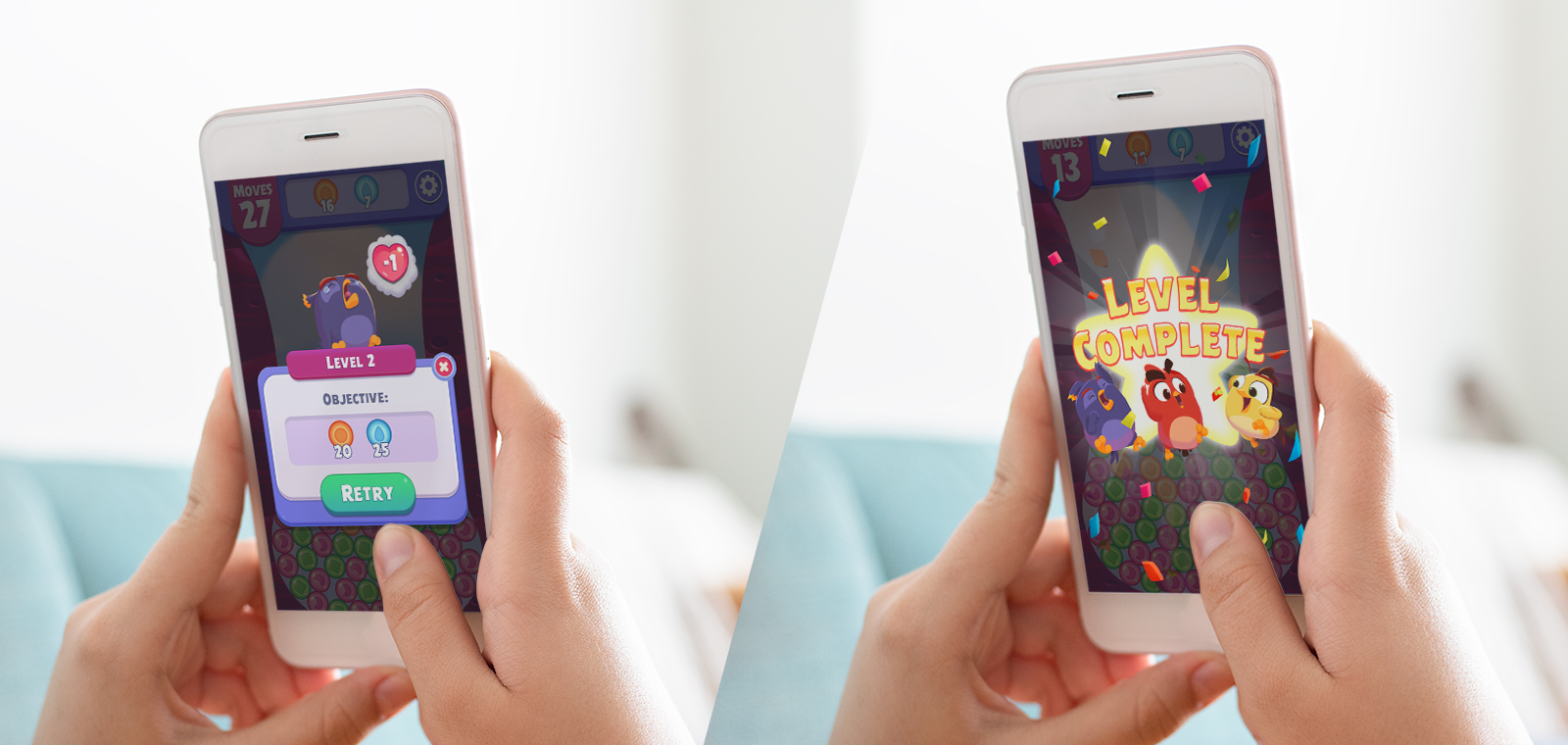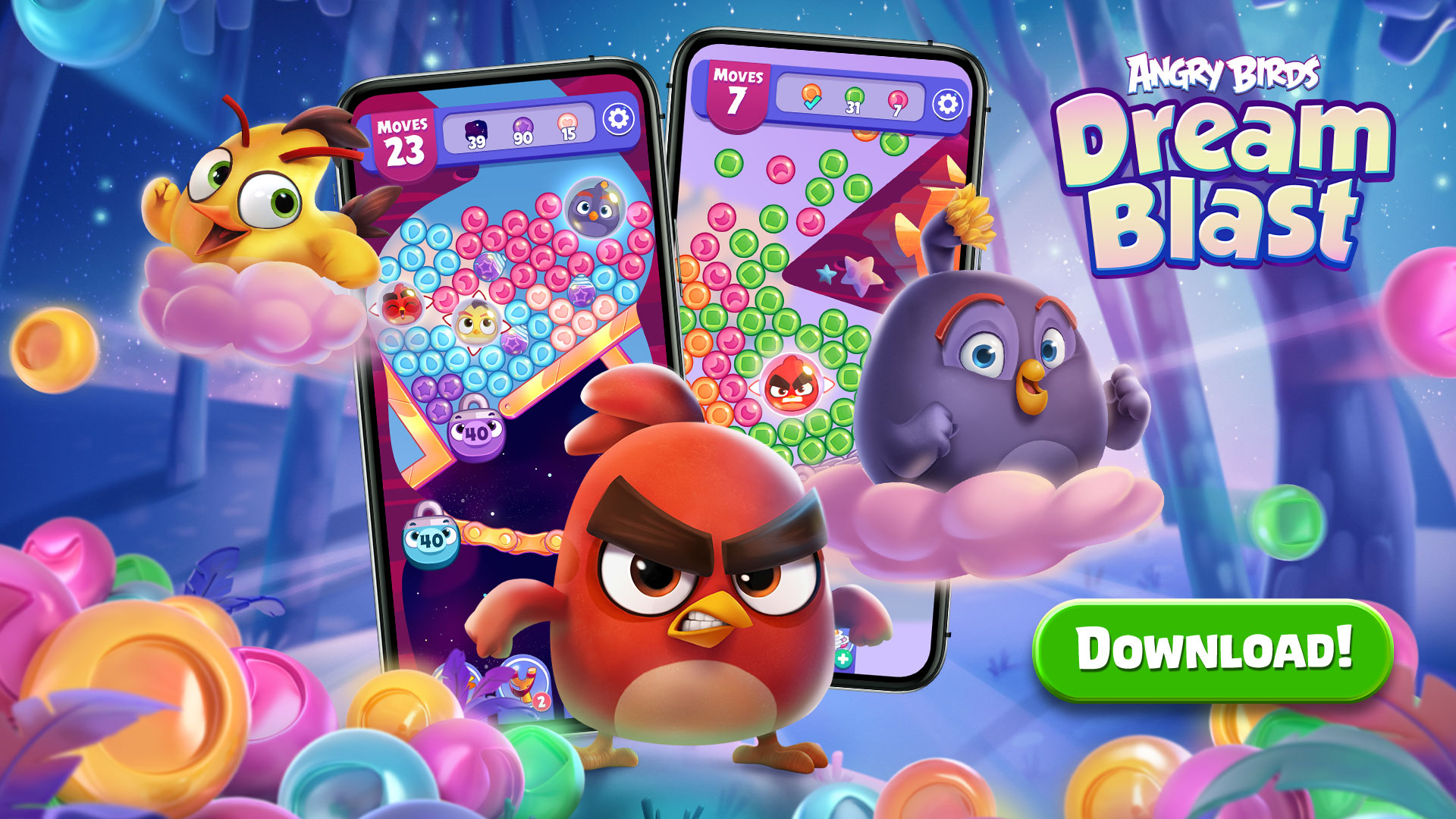
Hear from Rovio UX designer, Gonzalo Vazquez, about the concepts that guide UX design in Rovio’s Puzzle Studio.
Rovio’s Puzzle Studio is known for creating accessible and instantly fun puzzle games like Angry Birds Dream Blast and the recently released Small Town Murders. At the center of all of that accessibility is UX design that simplifies, refines, and streamlines the player’s experience so they can get right to the fun, fast. At the core of that are Rovio’s UX designers who work in tandem with game and system designers to create new features and refine existing ones. We caught up with one such UX Designer, Gonzalo Vazquez, to talk about Rovio’s approach to UX and how UX is important throughout the entire journey of the player, not just after they download.
UX is a deep discipline that involves many different aspects. This makes it very difficult to define in one go, but by looking at the different things that come together in UX, we can arrive at a more understandable and actionable definition for mobile game development. First, UX involves usability, but it also extends further to encompass a more holistic view of a user’s total interaction with a product or service. One example of UX beyond usability in game design comes from game UX consultant Celia Hodent, who identifies the ability of a game to keep its players interested and playing, a concept she terms engageability. Here’s Gonzalo on how these two concepts come to life in Rovio’s games:
“For usability, we consider three main topics: simplicity, learnability, and practicality. In terms of simplicity, things should be very clear and consistent. We should always refer to the same things always in the same way. For example, lives are always represented with a heart icon. For learnability, we provide signs to players so they can make more informed decisions in the game, such as having a red badge on top of an icon to let you know that there is something new for you to check.
“Providing feedback for players’ actions is important too. By following feedback, players can learn what they need to do to succeed in the game. We try to reinforce things like that (making a match, clearing a level) with positive feedback. We also use negative feedback to encourage other behaviors, such as encouraging players to play on when they run out of moves with animations of the characters looking sad and a visual indication that the player will lose a life.

“Engageability refers to how the game can appeal to the players’ motivations and emotions. Learning about our players’ motivations help us to drive them towards different actions. Through emotions we are able to engage players and influence their thoughts and behaviors. Also part of this engageability is flow, the state of deep focus that we are looking to create in our games while players are playing.”
So far, we’ve been talking about how UX presents itself in-game, but in fact a player’s experience with a game begins even before they download. The term user experience was first used by Don Norman (the professor, researcher, author of The Design of Everyday Things, UX expert, and former User Experience Architect at Apple) to describe a user’s entire experience with a product or service, starting from the very moment they are made aware of it. In the case of mobile games, most new players will become aware of a game through a few different channels, namely, online advertising, an app store product page, or through app store featuring. Puzzle Studio uses this first opportunity to already start onboarding players to the game from a UX perspective. Gonzalo again:
“Considering the entire player timeline is really important to us, including things like marketing assets and the app store product page into our concept of user experience. We assist games from the moment players discover the game, not only after they download it. We try to understand what motivates players early on to download and engage with the game so those motivators can be represented in the app store screenshots for example. Is it a collection game? Is it a narrative game where we are giving you a story to follow?
“One of the actions that we try to do is to make the flow from the discovery material to the activity of the game as seamless as possible. So if we promise something in the discovery stage, we need to make sure that those promises are fulfilled in the game. It might not always be literal gameplay in ads for example, but instead we try to appeal to the motivations that would make a player interested in the game and continue playing.”

The player journey does not stop at discovery. At each step, from discovery to being a full-blown super-fan that plays every day, each step in the player’s timeline has different needs that must be considered from a UX perspective. According to Gonzalo, having someone on the team that is constantly considering the player is instrumental in designing effective UX.
“Rovio is a player-focused company, and I would say UX is one of those crafts that are constantly paying attention to the players. I appreciate that Puzzle Studio decided to invest in having dedicated UX designers that can be more involved in the backbone of the experience than for instance a UI artist who is also doing UX duties. Also, having a significant research department at Rovio makes a total difference in terms of understanding our players and then being able to provide better UX designs.”
If you are interested in lending your UX talents to one of Rovio’s studios, don’t hesitate to reach out to senior recruiter, Alexei Ryan, through LinkedIn, or take a look at the open positions on our Careers page.